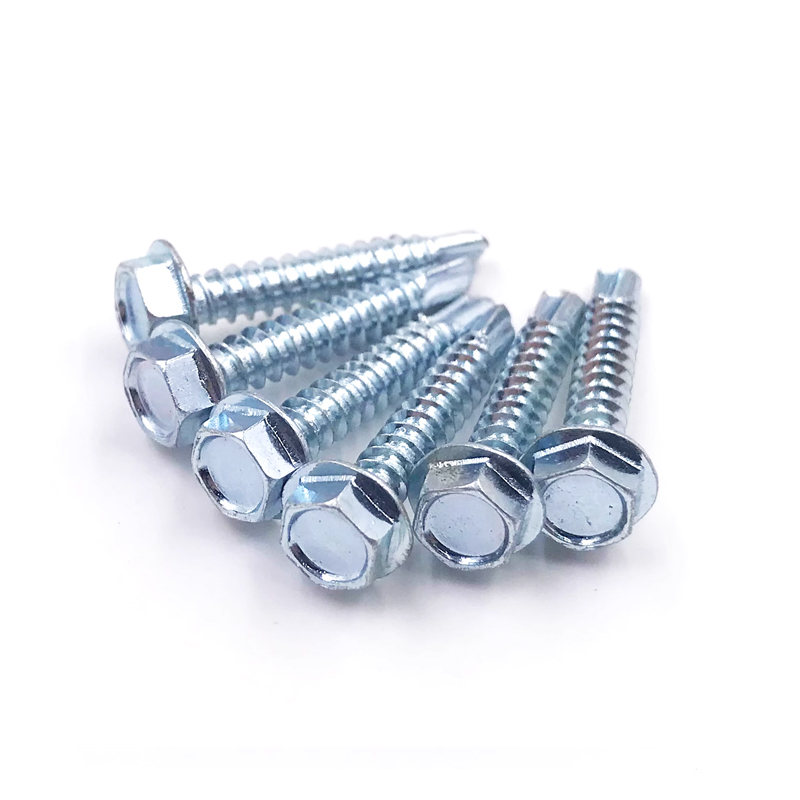self tapping screw countersunk head
Understanding Self-Tapping Screws with Countersunk Heads
When it comes to fastening solutions, self-tapping screws with countersunk heads play a pivotal role in various construction and manufacturing applications. These screws are specifically designed to create their own hole as they are driven into materials, streamlining the assembly process and enhancing the efficiency of projects. This article will delve into the design, benefits, applications, and selection criteria of self-tapping screws with countersunk heads.
Design and Composition
Self-tapping screws are unique in their ability to tap their own threads into the material they are being installed into, which eliminates the need for pre-drilled pilot holes. This feature not only saves time but also simplifies the fastening process.
A self-tapping screw typically features a sharp point at the end, which allows it to penetrate a material effectively. The body of the screw is often threaded along its entire length or partially, depending on its intended application. The countersunk head, in particular, is designed to sit flush with the surface of the material once installed. This is achieved through a conical shape that allows for a smooth transition from the head of the screw to the surface, providing a clean, aesthetically pleasing finish.
The materials used in manufacturing self-tapping screws can vary, with options including steel, stainless steel, brass, and plastic. The choice of material often depends on the application's requirements, including strength, resistance to corrosion, and overall durability.
Benefits
Self-tapping screws with countersunk heads offer numerous advantages that make them a preferred choice in many scenarios
1. Easy Installation The ability to create their own threads eliminates the need for additional tools or processes like drilling, which significantly speeds up installation time.
2. Flush Finish The countersunk design provides a clean look by allowing the screw to sit flush with the surface. This is not only aesthetically pleasing but also reduces the risk of snagging or catching on equipment or materials.
3. Versatility These screws can be used in a variety of materials, including wood, plastic, and metal. They are commonly used in furniture assembly, sheet metal work, and construction applications.
4. Enhanced Strength The design of self-tapping screws often leads to stronger connections compared to standard screws, as they create a tighter hold in the material.
self tapping screw countersunk head

Applications
Self-tapping screws with countersunk heads find applications across various industries due to their versatile nature. Common uses include
- Furniture Assembly In the flat-pack furniture industry, self-tapping screws provide a quick solution for assembly while maintaining a clean finish. - Construction These screws are frequently used in building structures, particularly in applications where a flush surface is desired. - Automotive The automotive sector employs self-tapping screws in body assembly and other applications where a streamlined installation is crucial. - Electronics In electronic devices, these screws help secure components while providing a neat appearance.
Selection Criteria
When selecting self-tapping screws with countersunk heads, careful consideration should be given to several factors
1. Material Type Choose the screw material based on the application environment. For example, stainless steel screws are ideal for outdoor applications due to their corrosion resistance.
2. Screw Size and Length It is essential to select the appropriate size and length to ensure a secure fit without compromising the structural integrity of the materials.
3. Thread Type Different thread forms can impact the screw's performance in various materials. Coarse threads tend to provide better grip in softer materials, while fine threads are suitable for harder materials.
4. Head Type and Drive Style While countersunk heads are recommended for a flush finish, also consider the drive style (e.g., Phillips, flat, Torx) for ease of installation and the tools available.
Conclusion
Self-tapping screws with countersunk heads are indispensable in modern assembly and construction processes. Their ability to create a strong, flush finish makes them ideal for a wide range of applications, from furniture to automotive assembly. By understanding their design, benefits, and selection criteria, individuals and professionals can make informed decisions when choosing the right fastening solution for their projects. Embracing these innovative fastening tools contributes not only to efficiency but also to the quality and aesthetics of the final product.
-
Weatherproof Plastic Expansion Anchors for OutdoorNewsJun.06,2025
-
Sustainability in the Supply Chain: Eco-Friendly TEK Screws ProductionNewsJun.06,2025
-
Load-Bearing Capacity of External Insulation FixingsNewsJun.06,2025
-
Double Head Bolts: Enhancing Efficiency in Industrial MachineryNewsJun.06,2025
-
Corrosion Resistance in Chipboard Screws: Coatings for Wholesale DurabilityNewsJun.06,2025
-
Butterfly Toggle Bolts : Enhancing Structural ResilienceNewsJun.06,2025
